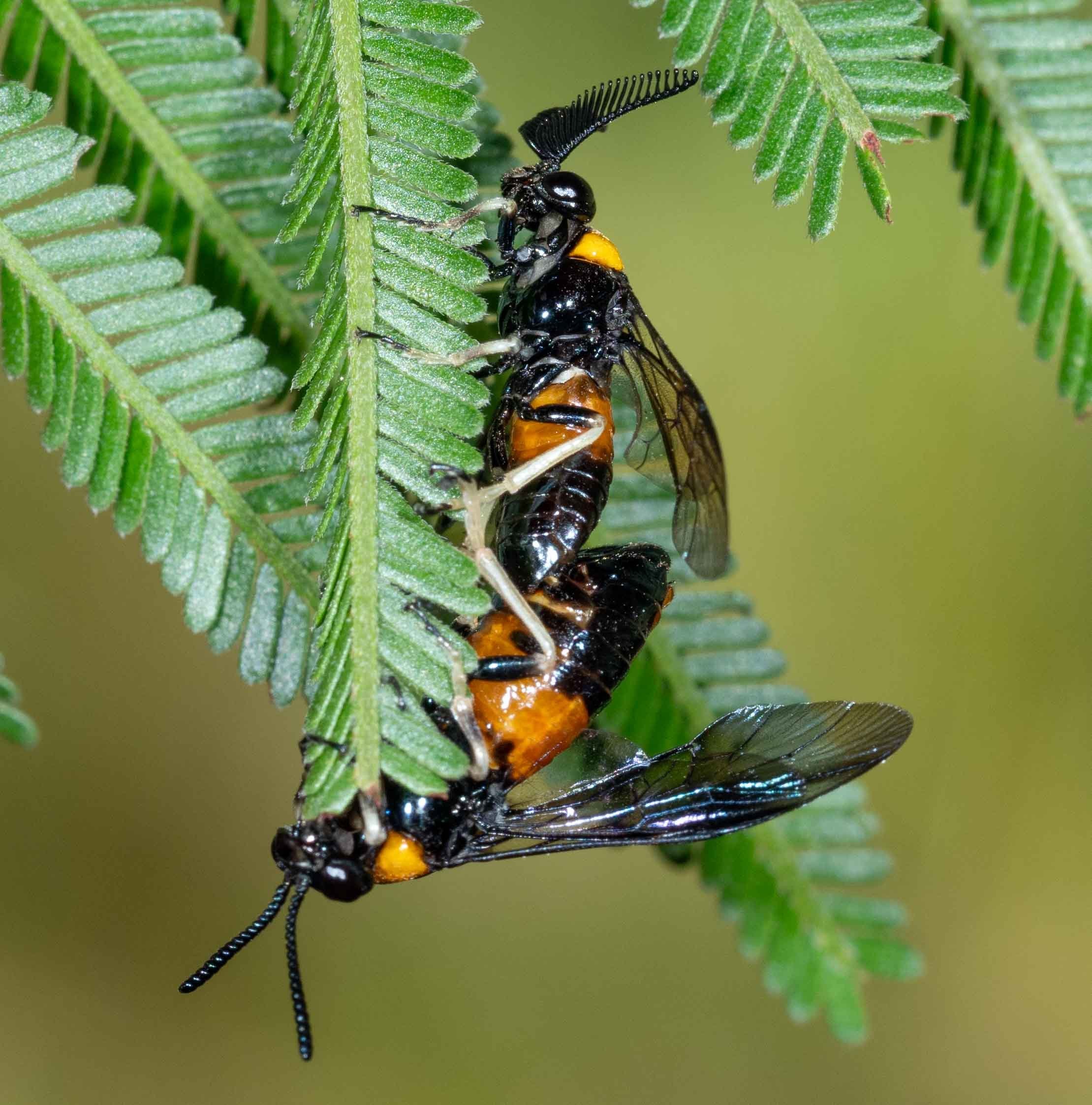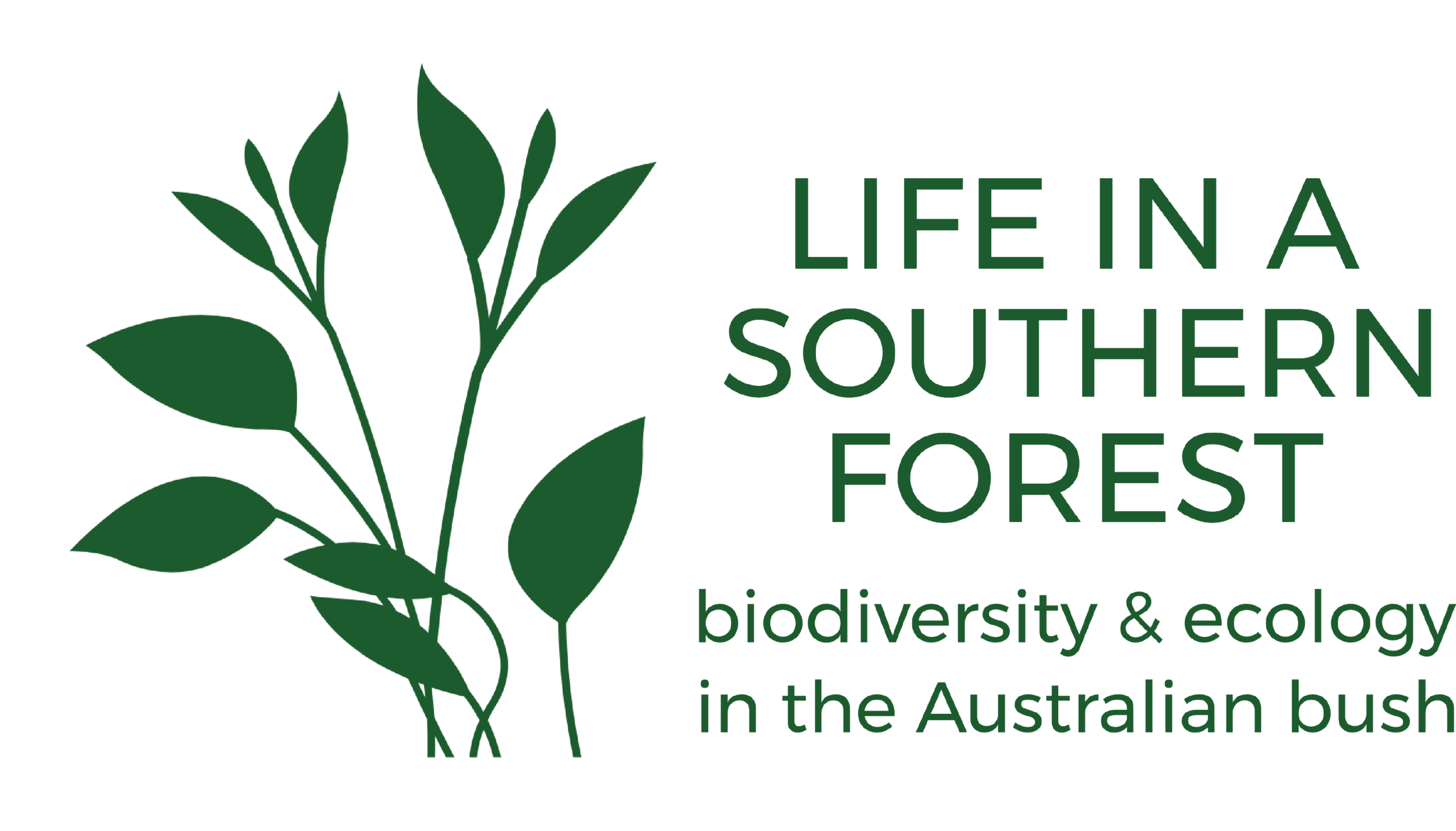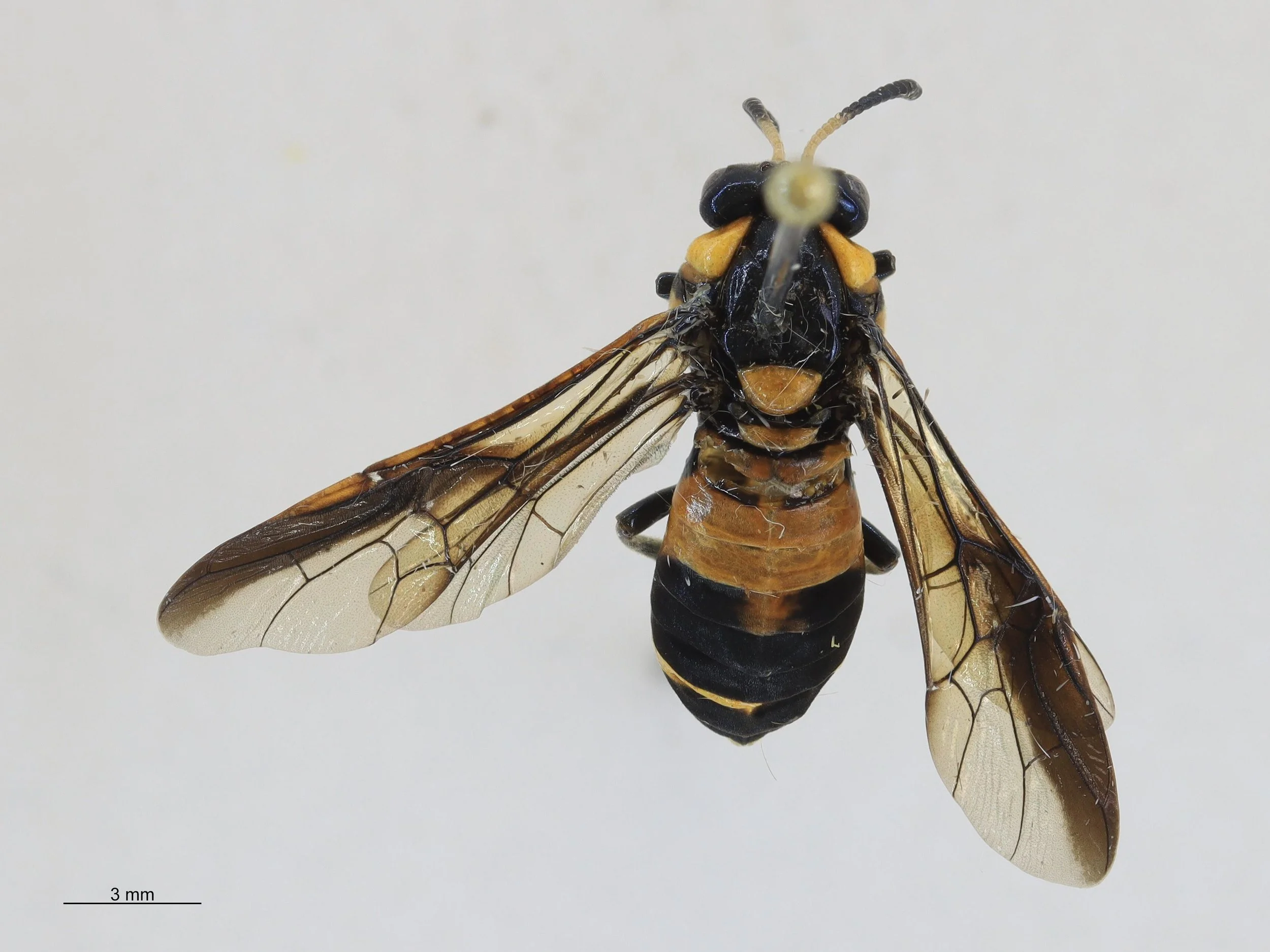Pterygophorinae species identification

Workbook
Note: This is a “work in progress”. Changes may be made as I discover additional relevant information.
Identification of species in subfamily Pterygophorinae
The matrices below are designed to aid identification of all species in the 2 genera that comprise the Pterygophorinae - Lophyrotoma and Pterygophorus. This subfamily has the following diagnostic features:
antennae 17-25 segmented, unipectinate
antennae of most males and some females have long pectens
antennae long, longer than greatest width of thorax
scutellum without hind lobes
mid and hind tibiae lacking preapical spurs
For each genus, two types of matrices are provided.
The full matrix was constructed using information in species descriptions and drawings in the taxonomic literature as well as photographs of type specimens (some of which are shown below). No reference was made to iNaturalist photographs when building that matrix.
The illustrated summary matrix, which is a modified version of the full matrix, does use information drawn from iNaturalist Research Grade observations of the species in question. Each photo in this matrix illustrates the typical appearance of that species and it could help you narrow down the search for the identity of your specimen. However, be aware that there is often considerable variability within a species. To arrive at a more secure ID, consult the table in this summary matrix.
Lophyrotoma
Lophyrotoma species have the following diagnostic features:
eyes parallel or very slightly converging in front (wide head, length of eye at most 2/3 shortest distance between eyes in front)
antennae solid black, except for male L. leachii and male and female L. zonalis, which have yellow basal segments
membrane between terga 6/7 not generally exposed
To view iNaturalist Research Grade observations of a particular Lophyrotoma species, click on the name of that species in the list below. (Species without a link have no RG observations at this time).
Lophyrotoma analis Lophyrotoma cyanea Lophrotoma cygna Lophyrotoma interrupta Lophyrotoma leachii Lophyrotoma nigripes Lophyrotoma opima Lophyrotoma ramosa Lophyrotoma uniformis Lophyrotoma zonalis
Biological notes: Lophyrotoma spp. have been observed pseudocopulating on the Flying Duck Orchid (Caleana major). See this iNaturalist observation and this one of a Lophyrotoma interrupta and this one of a Lophyrotoma cyanea. This one shows a male with an unidentified orchid pollinia on his mesonotum.
Reference Images
Drawings from the taxonomic literature and photographs of type and BOLD specimens
Lophyrotoma analis
Lophyrotoma cygna
Lophyrotoma interrupta (including Lophyrotoma nr interrupta)
Lophyrotoma leachii
Lophyrotoma nigripes
Lophyrotoma zonalis
Biological note about feeding of Lophyrotoma zonalis larvae: Purcell et al. (2005) note that L. zonalis is the only sawfly species that pupates by burrowing into the papery bark of broad-leaved Melaleuca trees. Many iNaturalist observations record adults and larvae of this species on the bark of Melaleuca trees in close association with holes in the bark (e.g. see this observation for adults and this one for larvae).
Pterygophorus
Pterygophorus species have the following diagnostic features:
eyes converge below (narrow head, length of eye about equal to shortest distance between eyes in front)
antennae with black apical and yellow basal segments in all species
membrane between terga 6/7 exposed and often bulging
To view iNaturalist Research Grade observations of a particular Pterygophorus species, click on the name of that species in the list below. (Species without a link have no observations at this time).
Pterygophorus cinctus Pterygophorus distinctus Pterygophorus facielongus Pterygophorus insignis Pterygophorus turneri
Reference Images
Drawings from the taxonomic literature and photographs of type and BOLD specimens
Pterygophorus cinctus
Click here to see my detailed description of an adult female I identified as Pterygophorus cinctus. This includes a comparison to other Pterygophorus species, stating how it differs in features that are visible in photographs.
Pterygophorus insignis
DNA barcoding using the COI gene shows that the above specimens are 99.7% similar (656/658bp) whereas they are only 97% similar (637/658bp) to this iNaturalist specimen, which I have identified as Pterygophorus cinctus with reference to original species descriptions (see my notes page here). This provides molecular support for P. insignis being a different species to P. cinctus.
Pterygophorus nr. turneri
Stefan Schmidt submitted the above BOLD PERGI020-12 specimen. The 28s rRNA gene sequence of this specimen (see sequence on GenBank here) differs by just two bases (i.e. 99.5% identity) from another specimen submitted by Stefan Schmidt (without image), which he calls Pterygophorus turneri (see GenBank sequence here). This degree of similarity in gene sequence strongly suggests that this specimen and Pterygophorus turneri are synonymous.
This iNaturalist observation shows a female matching the above image of Pterygophorus turneri mating with two males. Note that these males lack the yellow band on T7 evident in the female.
References:
Benson, R.B. (1938) “On the classification of sawflies (Hymenoptera Symphyta)” Transactions Royal Entomological Society London 87: 353-384
Benson, R.B. (1938) “A revision of the genus Pterygophorus Klug, sensu lato, with the description of two new genera (Hymenoptera, Symphyta)”. Annals and Magazine of Natural History 1:610-625
Costa, A. (1864) “Aeguisti fatti durante l'anno 1862”. Annuario del Museo Zoologico della Reale Universitá di Napoli 2: 8-138.
Froggatt, W.W. (1907) Australian Insects. Brooks et co. Sydney
Kirby, W.F. (1882) “List of Hymenoptera, with descriptions and figures of the typical specimens in the British Museum”. Vol. I. Tenthredinidae and Siricidae. London: British Museum, xxviii Biodiversity Heritage Library link
Konow, F.W. (1905) “Familie Tenthredinidae”. In Wytsman, P., Genera Insectorum. Fasc. 29
Leach, W.E. (1817) “The zoological miscellany; being descriptions of new, or interesting animals. Vol. 3”. Shoe-Lane, London: R. and A. Taylor. Biodiversity Heritage Library link
Morice, F.D. (1918) “Notes on Australian sawflies, especially the “Authors' Types” and other specimens in the British Museum of Natural History and the Hope Collections of the Oxford University Museum; with diagnostic synopses of the genera and species, and photographs illustrating their structural characters”. Transactions of the Entomological Society of London 66: 247-333 Biodiversity Heritage Library link
Purcell, M.F. & J.G. Goolsby (2005) “Herbivorous insects associated with the paperbark Melaleuca quinquenervia and its allies: VI. Pergidae (Hymenoptera)”. Australian Entomologist 32: 37-48.
Rohwer, S.A. (1910) “Some Australian Sawflies” Entomological News 21:467-474
Schmidt, S. & Smith, D.R. (2006) “An annotated systematic world catalogue of the Pergidae (Hymenoptera)” Contributions of the American Entomological Institute 34 (3), 207 pp. link to this catalogue from Pergidae of the World website
Schmidt, S., Walter, G.H., Grigg, J. & Moore, C.J. (2006) “Sexual communication and host plant associations of Australian pergid sawflies (Hymenoptera: Symphyta: Pergidae)” In S.M. Blank, S. Schmidt & A. Taeger (eds) Recent Sawfly Research: Synthesis and Prospects. Goecke & Evers, Keltern. ResearchGate link.
Takeuchi, M. & M.P. Zalucki (2021) “Feeding behaviour in Australian gregarious Lophyrotoma sawflies (Hymenoptera: Pergidae)” Austral Entomology 61: 494-504.
This is a workbook page … a part of our website where we record the observations and references used in making species identifications. The notes will not necessarily be complete. They are a record for our own use, but we are happy to share this information with others.




































